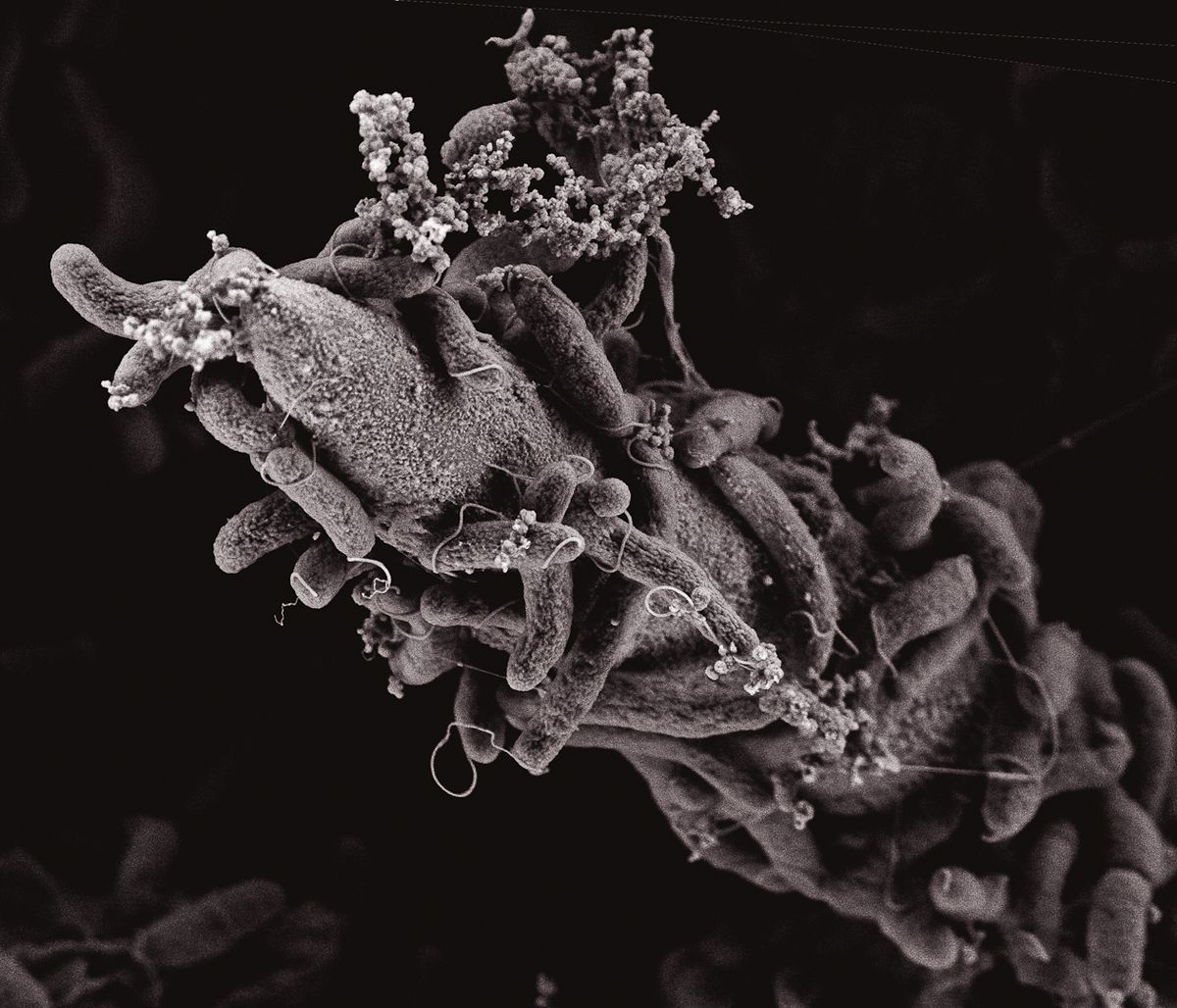Cholera Bacteria Spear Their Prey to Grab Genes

The bacteria that cause cholera grab genes from other organisms in a particularly predatory way, new research finds. The microbes spear neighboring cells with a kind of poison-tipped spike.
Bacteria often grab genes from other organisms and incorporate that DNA into their own genomes. But researchers at the Swiss Federal Institute of Technology in Lausanne, Switzerland, found that cholera (formally called Vibrio cholerae) have a unique way of doing so. The scientists discovered this by growing the bacteria under varying conditions, and comparing different strains.
Cholera is usually found in water, and it feeds on chitin, the stuff that makes up crustaceans' shells. In the new study, the researchers found that chitin seems to trigger a mechanism in the bacteria called the type VI secretion system. Through this system, a bacterium creates a kind of spike made of proteins, which spears out to strike neighboring cells.
The spike kills the target cell by releasing other proteins that dissolve cell membranes in a process called lysis. In doing so, the spike acts like a poison-tipped spear. Once the membranes are dissolved, the target cell bursts, releasing its DNA, and the cholera bacterium absorbs the freed genetic material. [The 9 Deadliest Viruses on Earth]
Making these spikes in itself isn't that unusual, nor is absorbing other creature's DNA, a process called horizontal transfer. Such gene transfer can be quite useful to bacteria, since it gives them a bigger toolkit of survival strategies. This is, however, the first time anyone has observed cholera bacteria — or any bacteria — using this system to gather up new genes. Cholera makes people sick when it is ingested. The bacteria gets to the small intestine and then multiplies, producing proteins that are toxic to humans and cause watery diarrhea. That in turn can cause severe dehydration and an imbalance of electrolytes. Without treatment, cholera can be deadly.
Humans can build immunity to some strains of cholera. But sometimes, new strains appear, and the transfer of genes from other species of bacteria (including other kinds of cholera) might be one reason these new strains arrive. "That's what we think — what we see is part of what makes the most virulent strains so virulent," said Melanie Blokesch, a co-author of the research and an assistant professor of microbiology at the institute.
Not every kind of cell can contribute DNA to cholera, as there has to be some similarity between the cholera cell and its victim, Blokesch said. Even so, some genes might alter the outer membrane of the bacteria, for example, making it less visible to the human immune system or tougher for people's stomach acid to kill. This kind of gene transfer might well have been involved in a cholera epidemic that hit Southeast Asia in the early 1990s, Blokesch said.
Sign up for the Live Science daily newsletter now
Get the world’s most fascinating discoveries delivered straight to your inbox.
John Mekalanos, a professor of microbiology at the Harvard Medical School who was not involved in the new research, said the discovery that chitin can induce this kind of activity is an important step.
"This is really fascinating for understanding mechanistically another way to acquire genes that encode factors that make it virulent," Mekalanos said.
Blokesch added that the spearing mechanism might be one more reason the cholera bacterium is so virulent in the human gut. Cholera might be spearing neighboring cells, killing them and exacerbating the problems it causes. (Cholera won't pick up human DNA, however, because it is too different.)
The study appears today (Jan. 1) in the journal Science.
Editor's note: This story was updated at 10:40 a.m. ET on Jan 2. to correct one instance in which Melanie Blokesch's name was mispelled.
Follow Live Science @livescience, Facebook & Google+. Originally published on Live Science.












